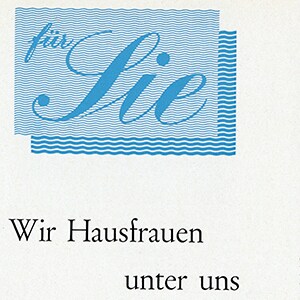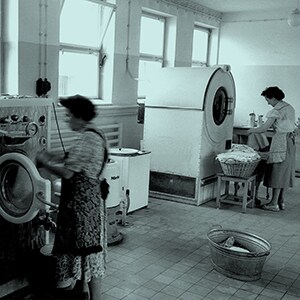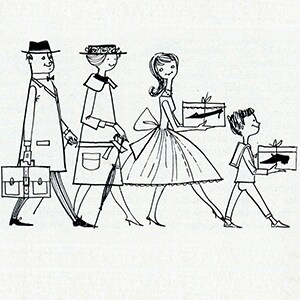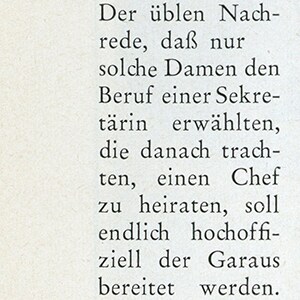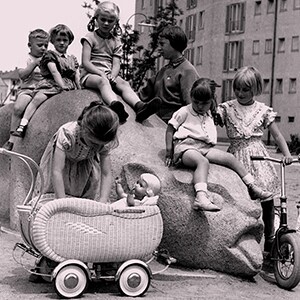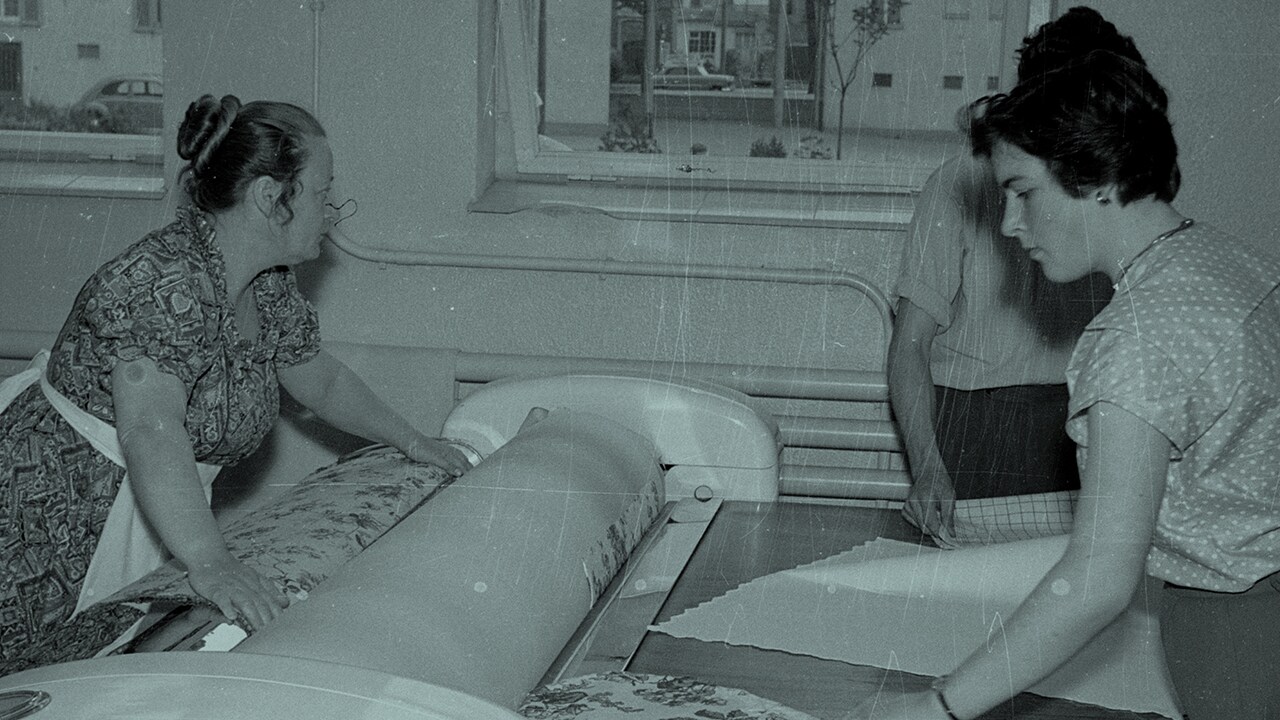
»If the editors of the ›Merck-Blatt‹ [Employee newspaper of E. Merck, Darmstadt, Germany] give women space for their problems and interests, then we should gratefully make use of it.«
Employee newspaper of E. Merck, Darmstadt, Germany, issue 2 (1957)
The first issue of the employee newspaper is published in 1935. In addition to the latest news from the international company, political and social aspects are always discussed and the everyday life and leisure activities of the employees are addressed.
In 1952, under the title »Women’s jobs at our site«, readers learn that 1,213 women work at the site, more than a quarter of the workforce. A year later, the article portrays »The medical-technical assistant. A women’s occupation in our company«. It highlights a relatively new occupation dominated by women.
In 1957, the employee newspaper introduces a new section that specifically addresses women. Until 1959, seven articles appear under the heading »For you«. The target group are not only female employees, but explicitly the wives of male employees as well. Topics are addressed that reflect the discussion taking place during the 1950s in the Federal Republic of Germany concerning women’s role within the family, the business world and society.
In a piece focusing on the »World of Housewives«, Else Lorenzen encourages reader to discuss »among ourselves contemporary problems, issues and needs of our occupation as housewives«. She takes a look at the typical daily routine of housewives and the expectations society places on housewives.
She appeals for a renewed awareness of emotional family values. To do this, women must also become aware of her their needs, for example by taking up a hobby or going on a journey. For only if wives and mothers are »emotionally, mentally and physically« relaxed, can they create an »island of domesticity«. This article is indeed also an appeal to the self-awareness of (house)wives.
In 1959, Susi Enders explains the qualities that the ideal secretary must have: »If she wishes to be successful and qualify as an executive secretary, [she must] be sufficiently educated to effortlessly comprehend foreign words.« However, she must also possess »skills of the heart« because »a secretary should not be merely an experienced office machine«. In the final article, Eva Anders writes about the life of working women. »I’m one in three« addresses the discrepancy between equal rights at the workplace and in everyday life. »My freedom of equal rights applies only in the labor market. Then, every evening, comes retreat from the eight-hour day. Then I dream of a crusade for ›bar and café visitors with equal rights’. Whether the dream of freedom after the end of a working day will only remain a dream? I am not the only one with this dream. After all, I’m one in three.«
The »For her« series of articles also offers useful tips on household management. In 1959, Susi Enders provides a 10-minute plan on how to prepare for summer vacation: »Whether you are going to the mountains or to northern or southern shores for recreation, it’s easy to quickly pack a suitcase correctly.«
»Remember that a smile can turn your eyes into bright lights, but that an angry, grim face can turn you into an ugly woman decades older. Smile and be satisfied each and every day – and if you feel like it, take a warm bath.«
Even though the last »For her« articleis published in 1959, the employee newspaper continues to reports on topics targeted especially to female employees or female members of employees’ families. In addition to events from the world of work and articles giving advice, political and social issues are also addressed from a female perspective.

